Craft Keeper
Recognizing a need in the market for an organizational tool for craft supplies, Craft Keeper was designed.Research | Wireframe | Prototype | Interaction Design | Visual Design |
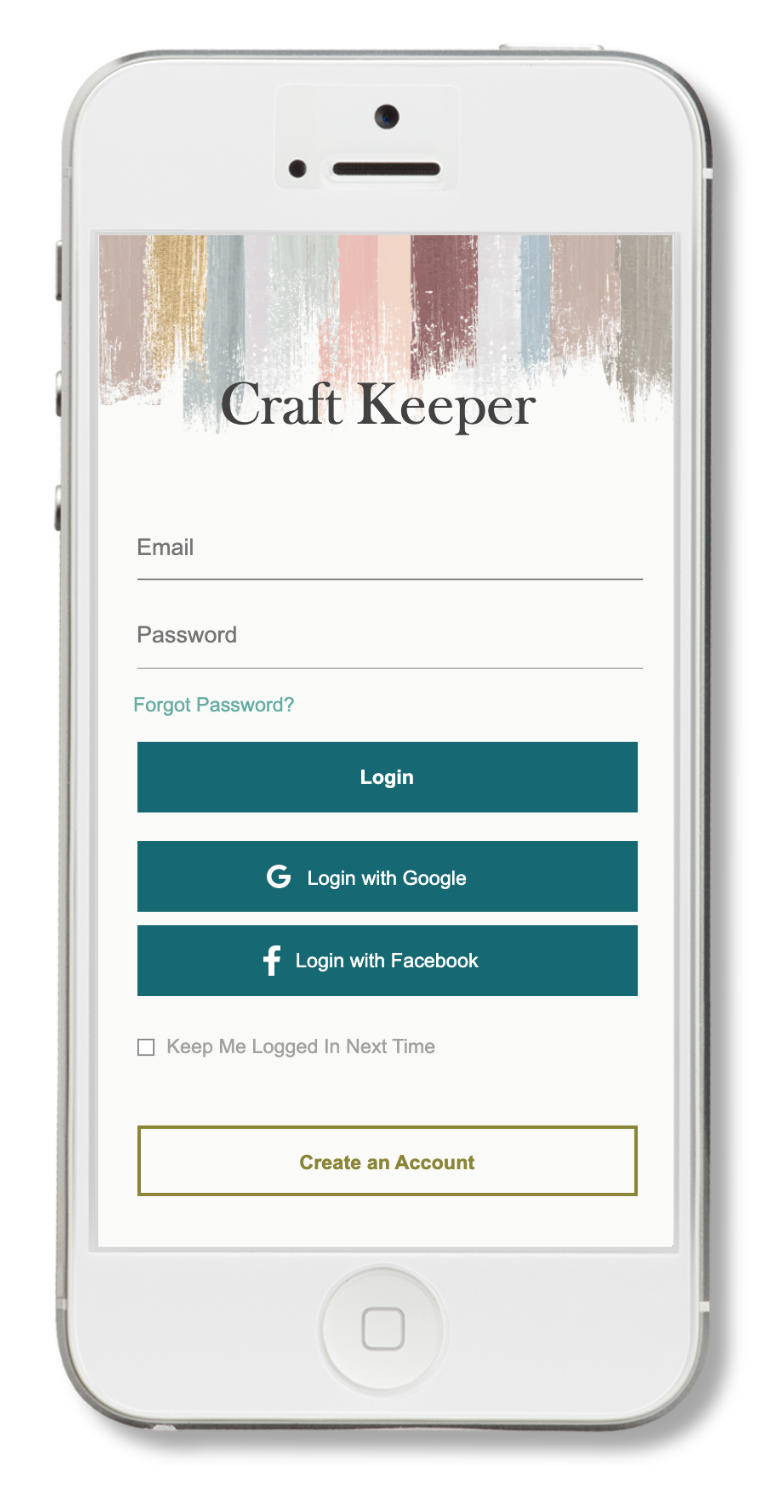
MY ROLE
I led the design of Craft Keeper from concept to interactive prototype. Included in this were the creation of workflows, wireframes, a working prototype, and visual design.
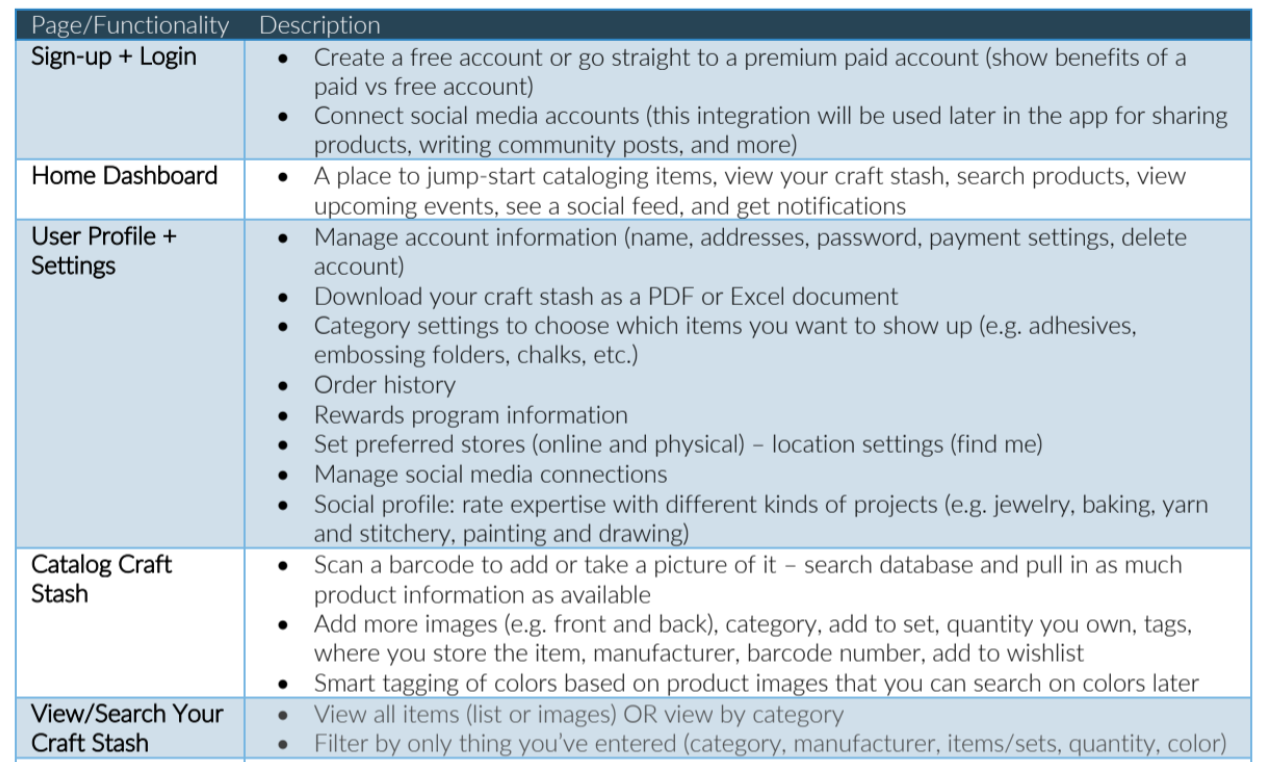
A snippet of the requirements I developed for Craft Keeper
Stakeholder Insights & Ideation
While I wasn’t able to partner with real stakeholders on this project, I am very close with others in the crafting community and was able to speak to and understand some potential users of my application.
Strategy & Vision
I created wireframes and prototypes to share the vision for what creating a mobile craft inventory product might look like. This helped evangelize ideas, gain alignment with my group-mates for feedback, and drive decision making.
Planning & Scope
Beyond the basic requirements of the assignment, I was able to define the core functionality of the Craft Keeper app and was able to prioritize what work was done at different phases. I strove for a balanced user, business, and development goals.
Execution & Validation
I created the visual and interaction designs for Craft Keeper, utilizing “best of” (widely understood) interaction techniques.
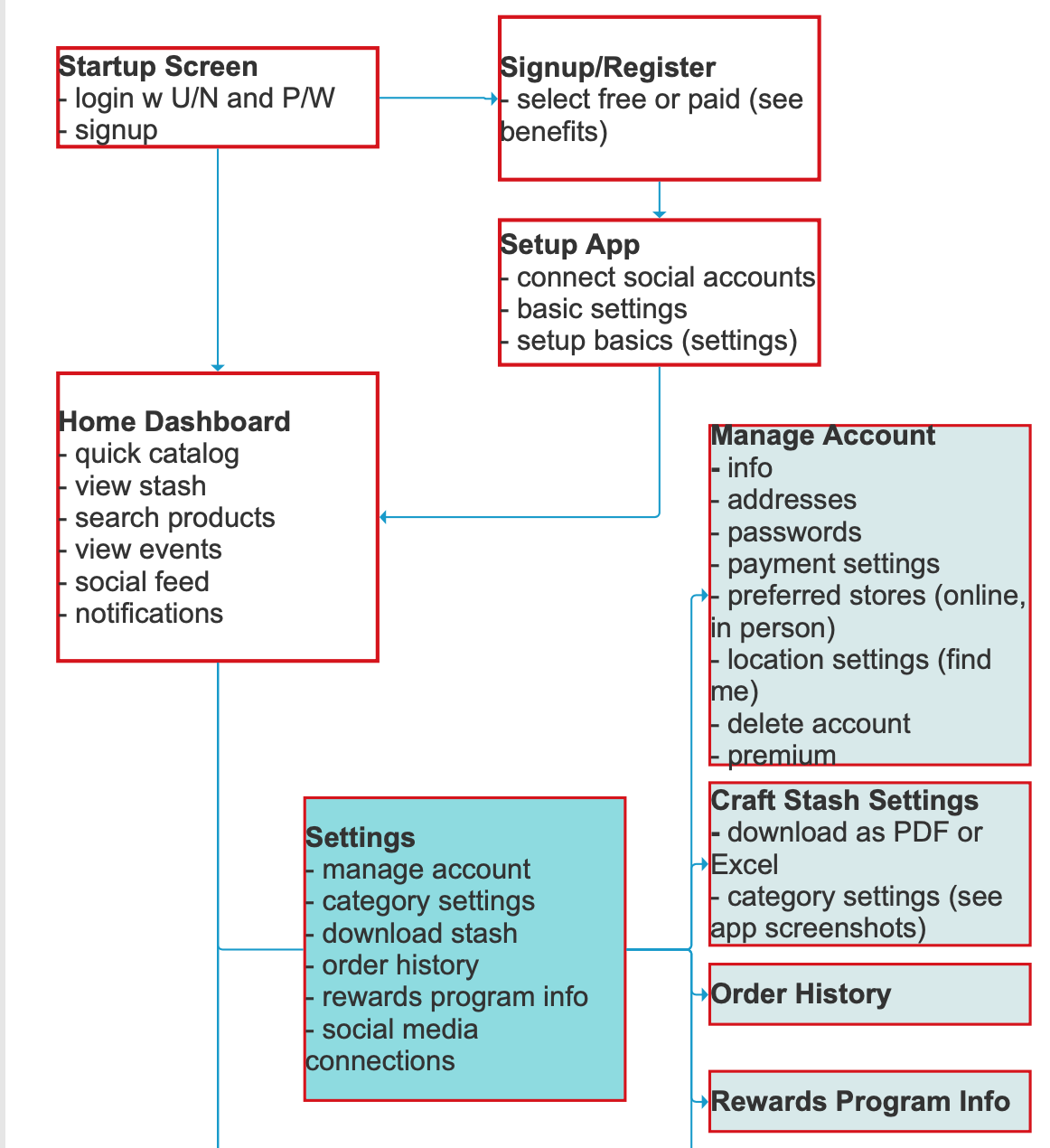
The start of the Workflow Diagrams for Craft Keeper
THE CHALLENGE
Craft Keeper is like the IMDB or Goodreads of craft supplies. It aims to let users catalog their personal craft
stashes quickly and be available the next time they’re shopping (because no, you really don’t need another green
embossing powder, you just forgot you had one!) In addition to cataloging craft supplies, users can create project
lists, search big-box retailers to find supplies in their area today, find craft inspiration and tutorials, and more.
Currently only one somewhat similar application exists in the market and it is only for cataloging paper crafting
supplies and is a paid mobile application (it is not accessible from a browser).with compliance standards.
The goals of this project included:
• Developing a fully functional mobile app and accompanying browser-based website
• Launching the Craft Keeper app by Spring 2020
THE APPROACH
The Craft Keeper application will be an installed application for iOS and Android devices. Additionally, there will be a
web-version so users can always see their information no matter where they’re at, on any device.
A crucial first step for designing Craft Keeper was to understand the users and their unique needs as well as understand the marketplace. The following was compiled on the user:
GEOGRAPHICS + DEMOGRAPHICS
• Mostly US and Europe (English speaking locations)
• Any age, although heavily late 20s through 50s
• Any gender, although heavily women
• Any occupation or income
• Tech savvy – very familiar with social media and e-commerce
PSYCHOGRAPHICS
• Lifestyle of the average user ranges from ‘crafts for therapy to forget work’ to ‘crafts to keep the kids entertained’ to ‘crafts for extra
income’
• Interests range from cooking to crafting to woodworking and more…users just want to make and create
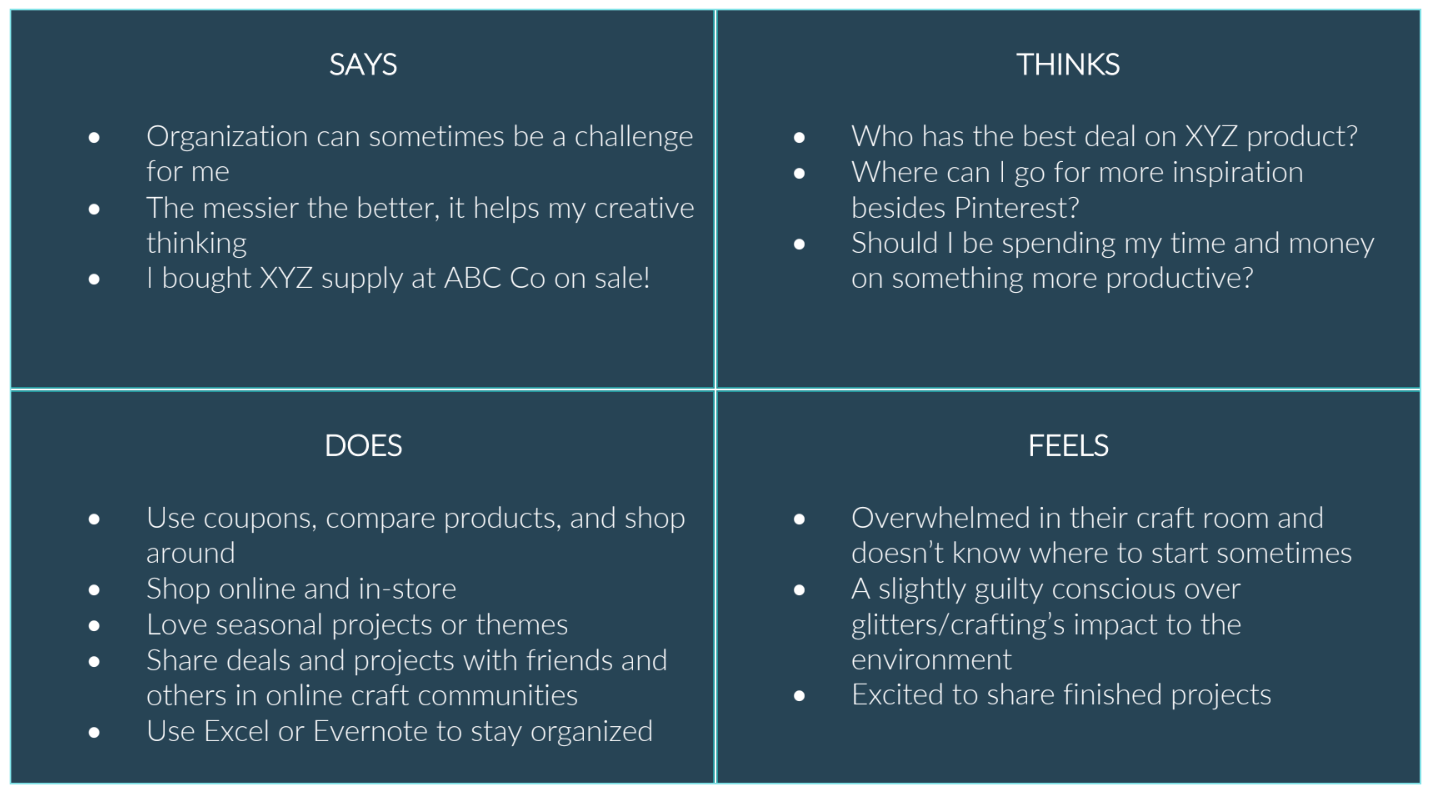
Users “say-think-feel-do” model
Ideally, some user research would’ve taken place here for guidance on information architecture.
Once the basic features were laid out I was able to develop some high-level workflows for (un-official) validation with some potential users as well as my classmates and professor. From there the workflows were turned into wireframes, again for peer and professor feedback, and then ultimately a functioning prototype.
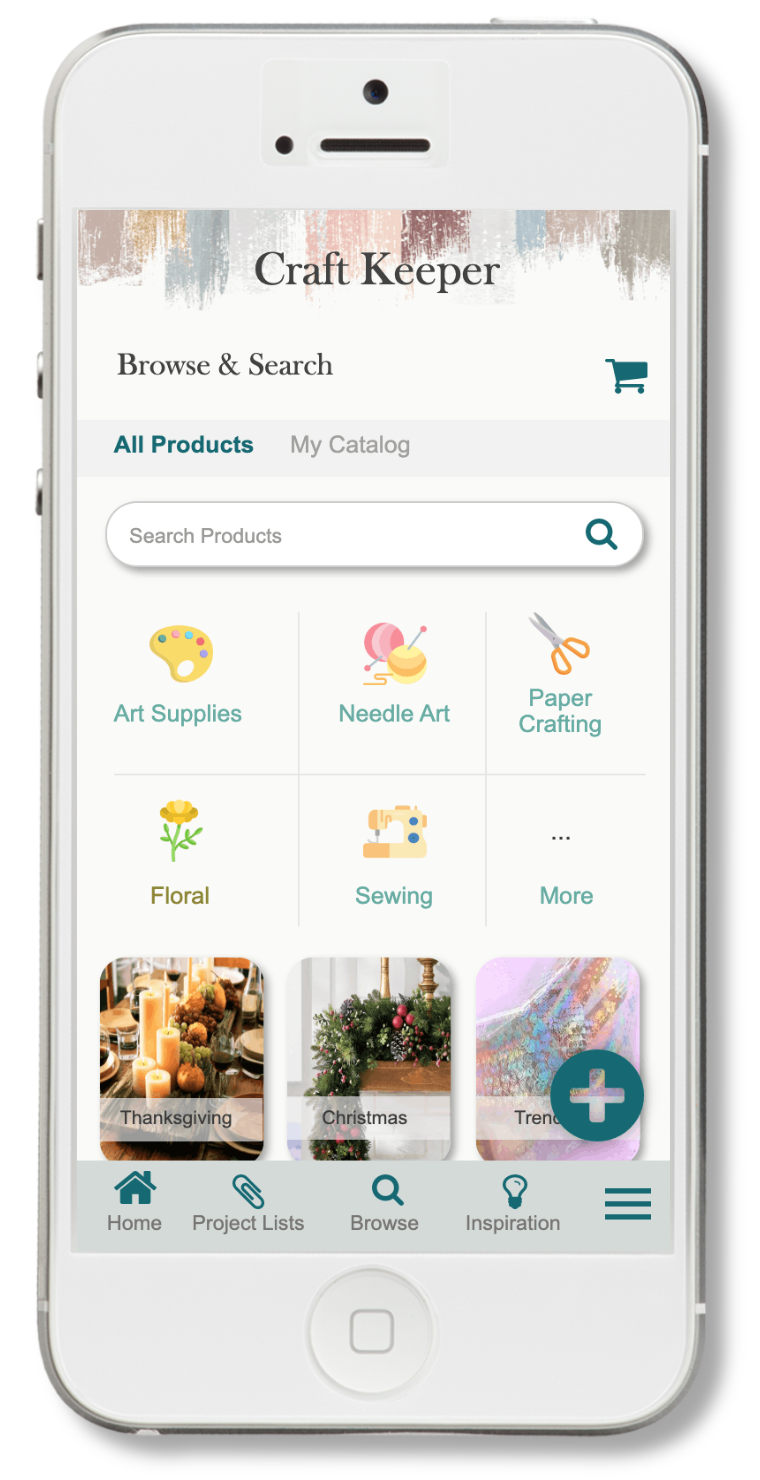
Screenshot of the Craft Keeper “Browse” page
THE IMPACT
While Craft Keeper is still in the formative stages of being a real product on the market, it will eventually make the difficult task of cataloging and recalling craft items simpler and is on its way to being validated by users.
A few things I would’ve done differently with this project had there been more time was more user research. I’ve learned over the years that nothing good will come out of never speaking to and testing concepts with users. Even when you think you know…you don’t. With this app, I built it mostly out of personal need, so in this case, I would be the end user. But there are so many other use cases and unique scenario’s that exist that in order to make a truly great product, I’d need to understand them.
Second, of the feedback I was able to receive throughout the project it was grossly past due to the point that by the time I received feedback I had already moved on to the next stage of the project where the feedback wasn’t relevant or made it extremely difficult to adjust. In real life, I would have never moved forward without testing with users, presenting that feedback for prioritization, and regularly communicating with my stakeholders along the way.
Interactive prototype can be found here: https://ind0re.axshare.com/#id=fhnl39&p=startup&c=1
Password is “Kent2019”